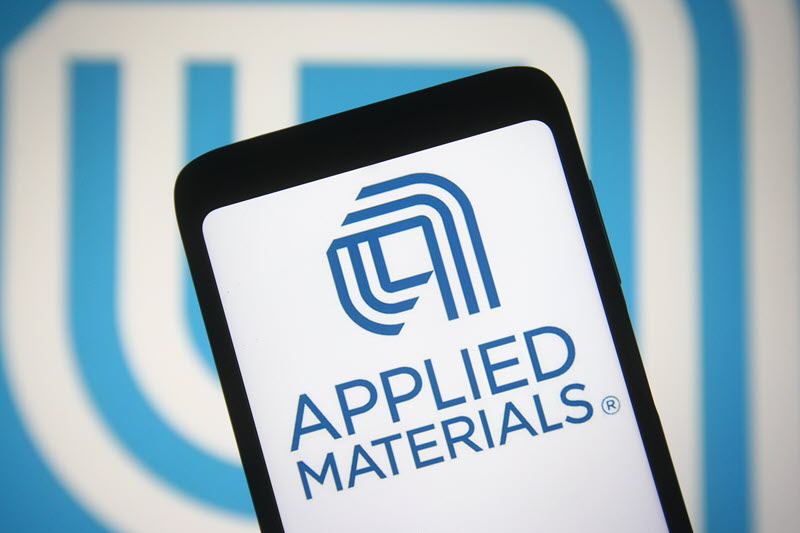Capstone Holding Corp. lowers convertible note conversion price to $1.00
Introduction & Market Context
Applied Materials (NASDAQ:AMAT) delivered strong financial results in its second quarter fiscal 2025 earnings presentation on May 15, highlighted by record non-GAAP earnings per share and its highest quarterly gross margin in over two decades. Despite these achievements, the company’s stock fell 5.6% in premarket trading to $164.96, suggesting investors may have had higher expectations or concerns about future growth.
The semiconductor equipment manufacturer emphasized artificial intelligence as the central driver of industry growth, positioning itself at the intersection of AI computing and advanced materials engineering. CEO Gary Dickerson described AI as "the most transformative technology of our lifetimes" with "almost limitless potential use cases."
Quarterly Performance Highlights
Applied Materials reported Q2 revenue of $7.1 billion, representing a 7% year-over-year increase, though slightly below analyst expectations of $7.12 billion. The company achieved record non-GAAP earnings per share of $2.39, exceeding the forecast of $2.31 and marking a 14% improvement from the previous year.
Gross margin expanded significantly to 49.2%, the highest since fiscal Q4 2000 and up 170 basis points year-over-year. Operating income grew 13% to $2.18 billion, with operating margin improving to 30.7%.
As shown in the following financial results summary:

The company’s performance was driven by growth across all business segments, with Semiconductor Systems leading the way at $5.26 billion in revenue and a 36% operating margin. Applied Global Services contributed $1.57 billion with a 29% margin, while the smaller Display segment generated $68 million with a 26.3% margin.
The segment breakdown illustrates the company’s revenue composition:

CFO Brice Hill highlighted the company’s financial strength, noting that Applied Materials distributed approximately $2 billion to shareholders during the quarter. The company maintains a strong balance sheet with $10.4 billion in cash and investments against $6.3 billion in debt.
Strategic Initiatives
Applied Materials emphasized its strategic positioning for the AI-driven semiconductor industry transformation. The company highlighted how AI data center innovation is driving shifts in wafer fabrication equipment mix toward leading-edge foundry-logic and advanced DRAM technologies.
The presentation detailed how energy-efficient computing for AI requires significant materials engineering innovations:

The company is capitalizing on major device architecture inflections, particularly in leading-edge foundry-logic with gate-all-around (GAA) transistors and backside power delivery (BPD). According to the presentation, the transition from FinFET to GAA increases the company’s revenue opportunity by approximately 30%, growing the transistor serviceable available market from about $6 billion to $7 billion.
These architecture transitions represent significant growth opportunities:

Applied Materials also showcased new product innovations, including the Centris Sym3 Y Magnum Etch system, which has generated over $1.2 billion in revenue since its February 2024 launch. The company’s SEMVision H20 Defect Review system supported record revenues for its Process Diagnostics and Control business in Q2.
The company’s innovation strategy includes the EPIC Center (Equipment and Process Innovation and Commercialization), a collaborative platform for high-velocity co-innovation currently under construction and expected to begin operations in Spring 2026.
Forward-Looking Statements
For the third quarter of fiscal 2025, Applied Materials projects revenue of approximately $7.2 billion (±$500 million), representing a 6% year-over-year increase. Non-GAAP EPS is expected to be around $2.35 (±$0.20), an 11% year-over-year improvement.
The detailed Q3 outlook shows expectations by segment:

The company anticipates continued strength in leading-edge foundry-logic investments and expects Advanced DRAM revenues to grow more than 40% in fiscal 2025 as customers ramp investments in DDR-5 and High-Bandwidth Memory (HBM) technologies.
Long-term, Applied Materials views AI as a major catalyst for innovation and growth, with applications and infrastructure in the early phases of a multi-decade build out. The company emphasized that its global supply chain and diversified manufacturing footprint provide the agility and flexibility needed to navigate the dynamic commercial landscape.
Capital Allocation Strategy
Applied Materials reaffirmed its commitment to returning 80-100% of free cash flow to shareholders over time. The company’s capital allocation strategy balances investments in R&D and infrastructure with shareholder returns through dividends and share repurchases.
Over the past ten fiscal years, the company has reinvested more than $22 billion in R&D and more than $6 billion in capital additions, while distributing nearly 90% of free cash flow to shareholders. During this period, dividend per share grew at approximately 15% CAGR, and shares outstanding were reduced by 33%.
The company’s cash flow and shareholder distribution trends are illustrated below:

Despite the strong financial performance and strategic positioning, investors appeared cautious following the results. This reaction may reflect concerns about the slight revenue miss, potential impact of trade restrictions on China business, or broader macroeconomic pressures including inflation and interest rate fluctuations.
Applied Materials continues to emphasize its technological leadership and strategic positioning for the AI-driven semiconductor industry transformation, maintaining that it is well-positioned to capitalize on the major device architecture inflections enabling AI computing.
Full presentation:
This article was generated with the support of AI and reviewed by an editor. For more information see our T&C.
